Sony Xperia Z2 vs HTC One (M8)

Introduction
Over the past couple of years, Sony has struggled against the forces dominating the high-end smartphone scene. Its top handsets, although good, all lacked that extra mojo needed for a phone to truly stand out. Now, however, it looks like Sony may finally have a winner on its hands, namely the Xperia Z2. Long story short, it is an awesome smartphone, and if you're not convinced, feel free to read our in-depth Sony Xperia Z2 review.
But now that the Sony Xperia Z2 has finally launched, it has to compete against a number of flagships from other well-known companies, and one of its rivals happens to be the HTC One (M8). There's a lot to love about the latter – it looks great, runs flawlessly, and those front-facing speakers sound pretty darn amazing. Yet is the HTC One (M8) better than the Sony Xperia Z2? Read on to learn more.
Design
Both the Sony Xperia Z2 and the HTC One (M8) rank near the top of the “awesome” scale with their outstanding designs, and picking a favorite isn't as easy as it seems. That's probably why having them side by side for a comparison makes us feel as if we're in the middle of a clash between Thor and Superman.
Sony's flagship is a gorgeous, flat piece of glass and metal that gives us a solid, reassuring feel when held. Its rectangular shape will not appeal to everyone, but we think that it doesn't look bad at all. What really bothers us a bit, on the other hand, is that the phone feels quite large when gripped, partly because Sony's trademark OmniBalance design relies on straight lines instead of curves, and partly because, well, the phone is pretty big in size.
As for the HTC One (M8), it is an awe-inspiring phone encased in a beautiful, metal-made body, and we can't help to think that the general audience would find it more attractive, at least visually, than the Xperia Z2. What's more, although HTC's top model is about as wide, as tall, and as heavy as its rival, it fits better in the palm thanks to its curvy corners and back side.
True to its design traditions, Sony has placed the power and volume keys on the right side of the Xperia Z2. They are easy to reach, but somewhat lacking in feedback. Below them resides the 2-stage camera shutter key, which is used for taking pictures and for launching the camera from any screen. HTC has chosen to place the power key on the top edge of the (M8). Reaching it is a bit difficult since there's quite a bit of stretching that an index finger has to perform. To remedy the situation, HTC has added the option to activate the phone's screen with a double tap. The volume key is on the right side and could have had a little bit more travel to it.
Most of the ports on the Sony Xperia Z2 are protected by flaps, and for a good reason. The handset boasts an IP58 specification, which means that it is resistant to dust and water damage, unlike the great majority of the smartphones around. It is not invincible, however, so don't dip it in the hot tub just to see how much abuse it can take. The HTC One (M8) should also be able to withstand a light water splash, but a dip in a pint of lager could be fatal.
Sony has placed the Xperia Z2's SIM card and microSD card slots on its side where one of the aforementioned flaps keeps them safe. The cards placed there shouldn't be hard to eject if that is needed – all it takes is a fingernail or the tip of a pen. With the HTC One (M8), however, you'll need a pin or a similar tool to get its SIM or microSD card out as they both are placed in their own slide-in trays.
Both smartphones sport a pair of front-facing speakers, which is a perk you won't get from another maker's flagship. That produce high-quality stereo sound, but we'll save our comments for when we get to the multimedia part of this comparison.
Display
The Sony Xperia Z2 sports a 5.2-inch touchscreen with a resolution of 1080 by 1920 pixels, while the HTC One (M8), despite being about as large as its rival, packs a slightly smaller, 5-inch 1080 by 1920 pixel panel. Not that a difference of 0.2 inches is a deal breaker, but it still counts as an advantage for the Z2. Details in images shouldn't be a concern regardless of which phone you pick. Both smartphones have more than enough pixels per inch stuffed in their screens, which explains why high-res images displayed on them look amazing.
You'll be bombarded with buzz words when reading the description for the Sony Xperia Z2 display and the technologies thrown into it. First of all, the panel is of the IPS LCD variety. It also touts Sony's Triluminos display tech with Live Colour LEDs, which work in tandem to deliver a broader range of displayable colors and a more uniform brightness across the screen, according to the manufacturer. On the software side, the X-Reality image enhancement engine adds extra sharpness and contrast to photos and videos viewed in the phone's gallery. To put things in plain words, the Z2's display is a beauty that produces lively, eye-catching color hues even when viewed at an angle. Color accuracy isn't perfect, as our measurements demonstrate, but the screen is better in that respect than Sony's previous flagship models. We got a color temperature of 6900 kelvins, which is very close to the reference point of 6500K – whites are displayed very faithfully because of that. Overall color vibrancy is increased by a notch, and whether you like that or not would depend on your personal preferences.
The HTC One (M8) comes with a Super LCD-3 display that delivers the goods. Next to the Z2's display, however, it is clear to see that M8's panel has a blueish tone to it, visible when displaying white or shades of grey. Our measurements confirm its presence as HTC's flagship has a display color temperature of 7150 kelvins. It is close enough to the desired reference value, but not as close as the Z2 gets. At the same time, colors don't look as vibrant as they do on the screen of the Z2, but technically, they are represented more accurately, and that is, again, evident from our display benchmarks.
Outdoor visibility isn't an issue with any of these two phones. That's partially due to their adequate brightness output – the Z2 clocks in at 454 nits while the (M8) gets to 490 nits – but also because their screen surfaces manage to filter out some of the sunlight that hits them. Still, if we had to pick a favorite, that would be the One – its screen is a bit easier to see in broad daylight. When set to minimum brightness, both phones get down to 16 nits of brightness, which is tolerable, but probably not good enough to ensure a comfortable viewing experience at night. The Galaxy S5, in comparison, can reach a figure of 2 nits with its screen.
Interface
Android 4.4.2, which is the latest version of the platform available right now, comes loaded on the Sony Xperia Z2 and the HTC One (M8) out of the box. Don't expect seeing any stock Android UI elements on either of them, however. Sony has treated the system's interface to a thorough overhaul, adding both visual and functional improvements to the OS. Similarly, HTC has loaded Sense 6.0 onto the (M8) – a well-polished and consistent Android UI with a clean and modern look.
If you've ever used an Android device, then you should have no troubles adapting to Sony's custom interface as it is organized much like the stock one – with several home screens for apps and widgets and an app drawer listing all your installed applications. We must note that folders can be placed in the drawer, which is a welcome option since that lets us get all rarely used apps out of the way. In addition to this, there's a side panel in the app drawer for sorting and searching through installed applications. This panel hasn't been designed optimally, however, as we tend to toggle it on by accident every once in a while.
Sony has spiced things up a bit by adding theme support and a handful of its own live wallpapers, thus giving users more personalization flexibility. Toggle buttons in the notification panel are also present, to no surprise. Another handy feature are the so-called Small Apps – tools that run in their own window hovering above the UI. You only get a handful of these pre-loaded, including a voice recorder and a notes app, but the Play store contains dozens of these for you to try.
Sense 6.0 running on the HTC One (M8) is a bit more radical departure from stock Android, although you can make it feel a lot more stock-ish with a few tweaks. One of the UI's highlights is BlinkFeed – a home screen dedicated to aggregating your social networking news feeds with articles from online news outlets, thus bringing relevant information at the user's fingertips, available at a swipe's distance. You might like this feature if you're a heavy SN user, but in case you're not, you're totally free to turn BlinkFeed off.
The Sense 6.0 experience is complemented by various gestures used to accomplish a variety of tasks. A double tap on the screen when the handset is in stand-by, for example, will turn its display on, as if its power button has been pressed. Then a swipe up can be used to unlock the device, while a swipe to the right or left will bring us to BlinkFeed or our standard home screen respectively. It is also neat that the camera can be launched by placing the phone horizontally and pressing any of its volume buttons.
We tested Sony's on-screen keyboard, which comes loaded on the Xperia Z2, and we ended up feeling quite pleased. It has been developed with focus on personalization as it can be easily tailored to the user's preferences – it can be as simple or as complex as you want it to be. A wizard helps you configure options like auto-correction and word prediction. Accuracy is top notch.
The virtual keyboard on the HTC One (M8) is also a pretty good one, with plenty of options to configure and languages to select from. Personally, we find the one on the Z2 a little bit more accurate, but at the end of the day, using an on-screen keyboard efficiently is often a matter of how used your thumbs are to it.
Processor and memory
On paper, the Sony Xperia Z2 and the HTC One (M8) share a lot of hardware similarities. The same Qualcomm Snapdragon 801 ticks inside both of them – model number MSM8974-AB – with a quad-core Krait 400 CPU that can run at up to 2.3GHz and Adreno 330 GPU. On a side note, this particular chip is slightly less powerful than the Snapdragon 801 model MSM8974-AC, which powers the Galaxy S5, but it is still one of the fastest around.
If you're assuming that the two phones perform equally well in real life, however, then you won't be entirely correct. The Sony Xperia Z2 tends to lag if its home screens are too crowded. Some UI choppiness can be seen as well. Keeping your home screen clean and tidy will take care of the slowdowns, but at the same time, we were expecting more from Sony's flagship in terms of UI smoothness. Nevertheless, even heavy 3D games run perfectly fine on the Z2.
We did not experience any performance issues with the HTC One (M8) during testing. Compared to the Z2, it feels snappier while browsing back and forth through home screens. Unsurprisingly, demanding video games run without hiccups on HTC's flagship as well.
Sony has equipped the Xperia Z2 with a whopping 3GB of RAM, which is an advantage that only a few other handsets can brag with. The HTC One (M8), on the other hand, has 2GB of RAM, which is still good and definitely enough to ensure the smooth switching between applications. We aren't entirely sure just how big of an advantage is that extra gig for the Xperia Z2, but we can confidently regard it as more future-proof than the M8.
Both smartphones come with 16GB of on-board storage, and both have about a third of that reserved for system files. What's left is approximately 10 gigs, more or less, of user-available storage, which many might find insufficient. Thankfully, a microSD card slot is present on the two devices and can boost their storage space by up to 128GB extra.
Internet browser and connectivity
Chrome is the web browser pre-loaded onto the Sony Xperia Z2. It is fast, responsive, and comfortable to use as it inflates text in paragraphs, thus making it easier to read. Those who use Google's browser on their other devices will enjoy its option to sync bookmarks and tabs between them.
On the HTC One (M8) we find a browser that's simply labeled as Internet, along with Chrome, which also comes pre-loaded. The former handles even the heaviest of web pages without breaking a sweat. It won't inflate text for you, however, and we're not fans of its tab switching interface. Of course, you're free to use Chrome instead, or an alternative third-party browserfrom the Google Play store.
LTE Cat4 (up to 150Mbps down) is supported by the Sony Xperia Z2 across 10 different bands, which is a perk that few other smartphones boast. When no LTE is available, you can still rely on good old HSPA+ at rates of up to 42Mpbs down. The phone's set of connectivity features also includes the latest flavors of Wi-Fi, Bluetooth 4.0, DLNA, MHL, A-GPS with Glonass compatibility, and NFC.
The list of LTE bands supported by the HTC One (M8) is a bit shorter, with only four different frequencies on it (may vary for carrier-specific models). Nevertheless, HSPA+ at up to 42Mbps is always at your disposal, along with Bluetooth 4.0, the newest Wi-Fi standards, DLNA, MHL, GPS with Glonass compatibility, and NFC.
Camera
The 20.7MP camera that made its debut on the Sony Xperia Z1 is now gracing the Xperia Z2 as well. We're not complaining, of course, as we know what the snapper is capable of. The 1/2.3” size of the sensor makes it bigger than those found in most other popular smartphones, and with cameras, a bigger sensor is always a good thing. Pixel size, however, is average at 1.1 microns.
HTC has taken an unorthodox approach when designing the 4-megapixel UltraPixel camera found on the HTC One (M8). It is practically the same one that the last-gen One M7 had, but with an added secondary camera that captures depth information. The latter gives us the option to apply fancy effects to photos – to blur out the background or to convert images into 3D-like renditions. On a technical note, the One M8 camera relies on a 1/3” sensor with 2-micron pixels, and pixel size is touted as the camera's advantage over other cameraphones. These larger pixels should be able to capture more light, which is projected to result in good low-light performance. Resolution, however, is the UltraPixel camera's biggest drawback – it captures 4MP stills at a 16:9 aspect ratio.
Launching the Camera app on the Sony Xperia Z2 brings us to a clean and intuitive user interface, with large buttons for taking photos or video. The camera opens up in Intelligent Auto mode by default, which attempts to set the scene mode automatically, and it tends to be pretty accurate at that on the Z2. A manual mode has not been omitted, however. It lets the user control scene settings as they wish, to turn HDR on or off, and to take full-resolution, 20.7MP stills (Auto mode yields 8MP ones). Furthermore, Sony has added slow-motion video effects, background defocusing for professional-looking close-ups, 4K video support, and the option to download additional camera modes.
The camera UI on the HTC One (M8) isn't bad. We like that it is clean, with no knobs and toggles in the viewfinder's way, but switching between photo and video mode, or between the front and rear cameras, takes more taps than it does on the Z2. Nevertheless, kudos go to HTC for adding true manual controls to its camera software.
When it comes to actual image quality, the Sony Xperia Z2 is a class above the HTC One (M8). First of all, its images pack a lot more detail. Also, Z2's camera tends to be better at setting the right exposure, while the M8 might leave the photo under- or overexposed. Unless we use a tap to manually select the area that we want exposed, that is. On top of that, digital noise is more discernible in the M8's photos. Low-light indoor photos from the HTC One (M8) may turn out a bit lifeless, with dull colors. The Xperia Z2, on the other hand, produces livelier colors in a low-light indoor situation. Interestingly, very dark scenes in which the HTC One (M8)'s flash has fired look quite good, if not better than those from a Z2 with its flash on.
All in all, the HTC One (M8) UltraPixel camera is still a good one – it is fast and its photos are definitely usable – but it falls behind when compared to the camera on the Z2, or any other of today's flagships.
The Sony Xperia Z2 takes smooth, good-looking 1080p video at a steady 30 frames per second. Sound is clear and dynamic as well. The option to shoot 4K video with it is welcome, but it would be hard to truly appreciate it unless you have a 4K TV to enjoy the footage on.
The HTC One (M8) shoots daytime 1080p videos that are about as good as the Z2's. Framerate is set to 30fps by default, but there's also the option to crank the dial to 60fps for extra smoothness. Night videos, however, are not as fluid as those from the Xperia Z2 and exhibit a stronger motion blur.
Multimedia
There's a lot to love about the Walkman music player on the Sony Xperia Z2. First of all, it has a UI that is both beautiful and functional. We like its option to fill in any album art that happens to be missing in our collection. Modes and tweaks are present, to no surprise. You get an equalizer, which you're allowed to modify yourself, as well as ClearAudio+, which is an option that aims to enhance audio automatically, depending on what's being played. The Music application on the HTC One (M8) is also a pleasant-looking one, although we find its lack of an equalizer rather puzzling. It has a music visualizer, on the other hand, and like the Walkman, it can pull missing album art from the internet.
Watching videos on the Sony Xperia Z2 is a pleasure thanks to its large and vivid display. Moreover, the stock video player did not have any troubles playing back videos of any popular format. Either the gallery or the dedicated Movies app can be used to play videos with, both the ones you have recorded and the ones you have copied onto your handset. The latter has a clean and stylish UI, with a built-in option to edit videos shot with the Z2. There is no dedicated video player app on the HTC One (M8). (You can download a third-party one, of course). Instead, videos are listed in and viewed from the Gallery application. The video playback UI is clean and simple, but can also be used to trim videos in case that's required.
As we mentioned earlier, both phones sport front-facing speakers that produce high-quality stereo sound. The HTC One (M8), however, outpaces the Z2 in that respect. The former's speakers are louder and with much more depth, while the ones on the Xperia Z2 can't reach the same output level and have less presence in the lower register.
Another perk that makes the HTC One (M8) stand above the Z2 is its built-in IR blaster. With its help, HTC's phone turns into an intelligent remote control for your TV and set-top box. The pre-loaded TV application lets you switch channels, adjust the volume, and browse the TV menus, all the while acting as a TV guide (not available in all markets). The Xperia Z2 does not have an infra-red blaster, unlike many other flagship smartphones.
Call quality
You'd think that call quality would not have been overlooked on a top-tier smartphone like the Sony Xperia Z2, but in reality, what we heard did not meet our high expectations. The earpiece is okay. Sound coming out of it is definitely loud enough, but average in terms of quality with sharp “S” and “Sh” tones. Loudness was sufficient on the other side of the line, but the digitizing of the sound is easy to detect.
Phone calls made with the HTC One (M8), on the other hand, sound excellent on both sides. The earpiece is loud and produces no crackling even at the highest volume setting. Its microphones capture audio clearly without much background noise disturbing the conversation.
Battery
Don't let the slim profile of the Sony Xperia Z2 fool you. Inside it is tucked a beefy, 3200 mAh battery rated at 19 hours of talk time on 3G or 30.8 days on stand-by. Music and video playback times are said to be 120 hours and 10 hours respectively, according to data provided by the manufacturer. Of course, the actual time between charges depends heavily on what the phone is being used for and your mileage may vary from these figures. But if used with moderation, the Xperia Z2 should have no problems lasting a couple of days on a single charge. We must mention that Sony has baked its Stamina mode into the phone's software. When enabled, it may significantly extend the handset's stand-by time by turning unused radios and features off when they aren't needed.
The HTC One (M8) has been equipped with a smaller, 2600 mAh battery, although the difference in capacity shouldn't worry you much. According to the manufacturer, that should suffice for up to 20 hours of 3G talk time, and stand-by time is quoted as 20.7 days. In addition, running our custom battery benchmark on the handset produced a result of 7 hours and 12 minutes, which is excellent for the M8's class. Having this in mind, we're confident that if you're not pushing it too much, you'll squeeze a couple of days' worth of usage out of the HTC One (M8) without reaching for a charger. And let's not forget to mention the handset's extreme power saving mode. Turning it on will shut down all of the phone's non-essential features, but may extend its usage time dramatically.
Conclusion
Price-wise, the Sony Xperia Z2 and the HTC One (M8) rank among the most expensive smartphones money can buy right now, right along with other flagships like the Samsung Galaxy S5 and the iPhone 5s. But they're worth their price, given all the great features that both have to offer. Which one of the two you should pick, however, depends on your needs and taste.
Both phones excel in the design department – you'll be drawing the eyes of people nearby upon taking either out of your pocket. We'd say that the HTC One (M8) fits a bit better in the palm, but the Z2 is still okay as large as it is, not to mention that it compensates for its size with a slightly larger screen and a water-resistant construction. And speaking of screens, the 5-incher on the HTC One (M8) is indeed an eye-pleasing one, and with more accurately represented colors compared to the 5.2-inch panel on the Z2. The latter has the advantage of being a tad larger and with better-represented whites, but its pumped up colors aren't as accurate.
Then there's the performance of the two phones. Even though both pack the same silicon under their hoods, the HTC One (M8) feels slightly snappier, and we're guessing that the light-weight Sense UI has something to do with that. The Sony Xperia Z2 might feel slightly laggy if its home screens are too packed, but when it comes to, let's say, playing heavy games, Sony's flagship is in the same premier league together with the One (M8).
As for their UIs, Sense 6.0 on the HTC One (M8) is well-polished and very consistent. It is, without a doubt, one of the best custom interfaces that you might come across on an Android device. Plus, heavy social network users would probably be happy with BlinkFeed combining all their feeds in one single stream. Sony's user interface, on the other hand, isn't as radically different from stock Android, but it does add a number of handy modifications, including its Small Apps and its various options for personalization.
And when it comes to taking photos and videos, the Sony Xperia Z2 is the phone that has the upper hand thanks to its splendid 20.7MP camera. The Duo 4MP UltraPixel camera on the HTC One (M8) isn't bad, but it doesn't meet the expectations one would have for a top-of-the-line smartphone.

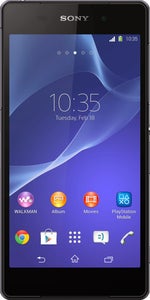
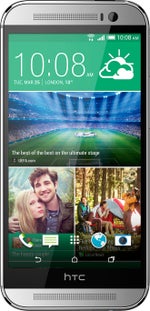








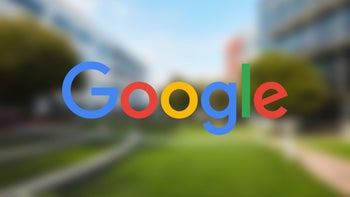
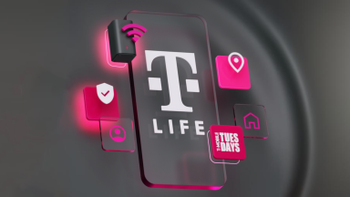
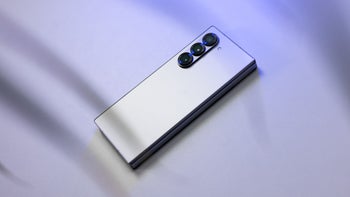

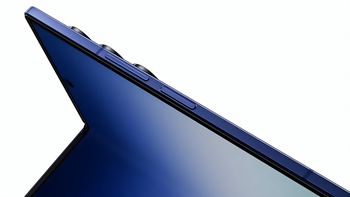
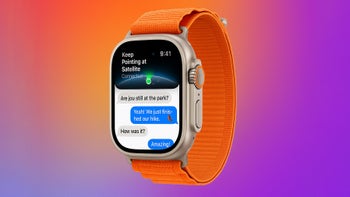
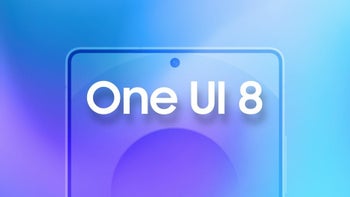
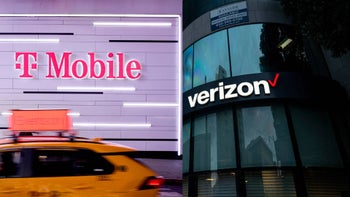
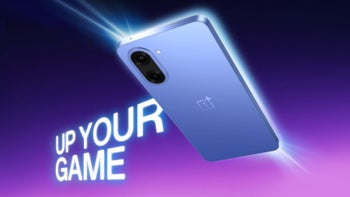
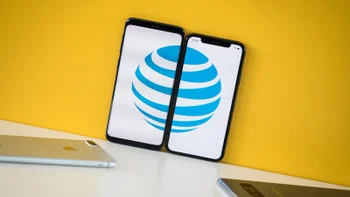
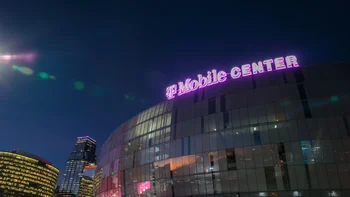
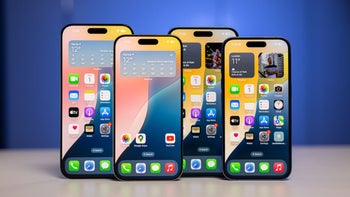






Things that are NOT allowed:
To help keep our community safe and free from spam, we apply temporary limits to newly created accounts: